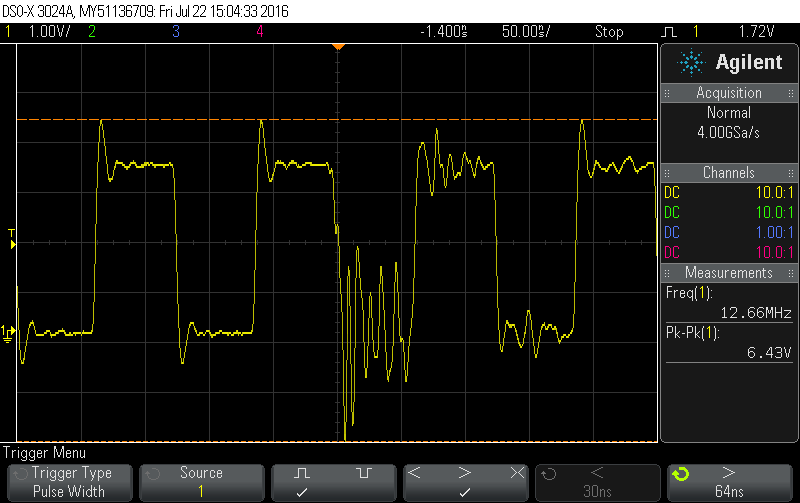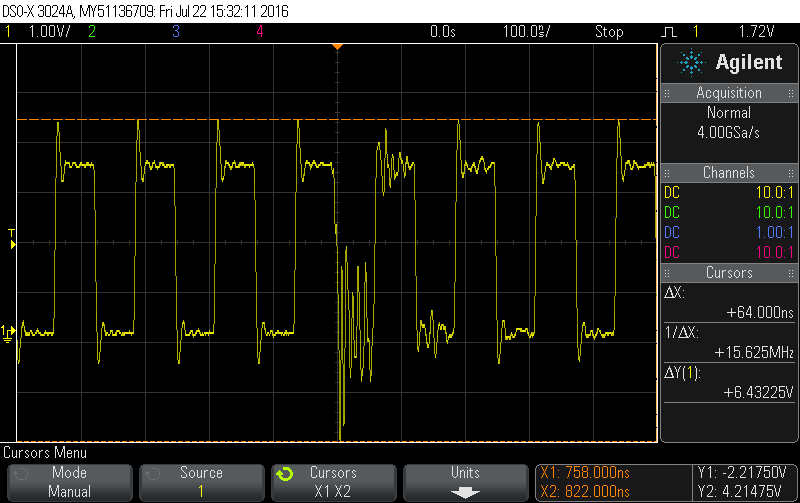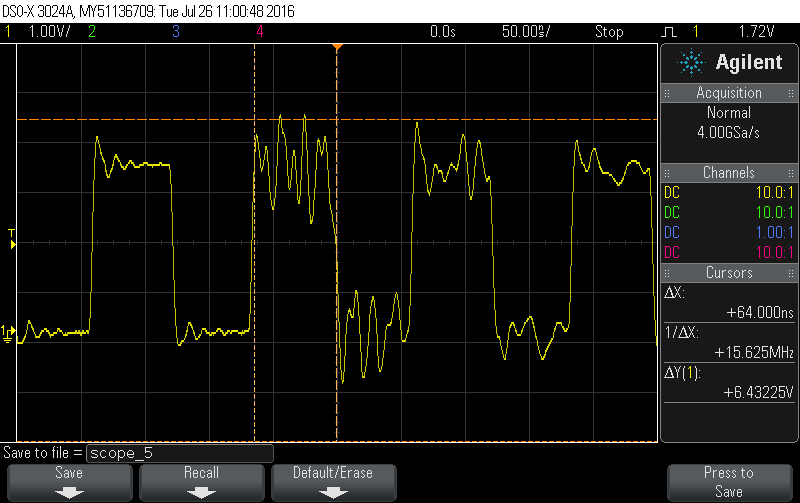Dear Support,
We are experiencing unreliable UART DMA communication that only occurs when we enable Deep Sleep. The link seems fine in normal Sleep mode. Specifically, about .3% of our 128 byte packets have 1 byte duplicated. We don't see dropped bytes or bit errors - just a duplicate character - kind of strange. The UART is configured for 115k baud, 1 stop bit, no parity. We are aware of the Errata DMA#02 which requires the deep sleep clock source to be the same as the run mode source. We are using the PIOSC at 16 Mhz for both run mode and deep sleep. We have logged the data being received by the UART and have verified no extra byte exists, but this duplicate byte is in the DMA receive buffer. Are there other relevant erratas? What code would you most like to see?
Thanks,
Brett




